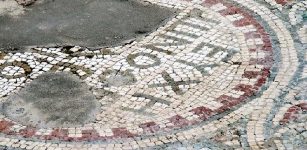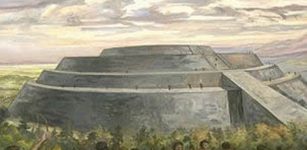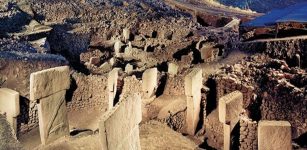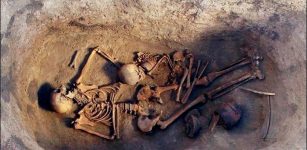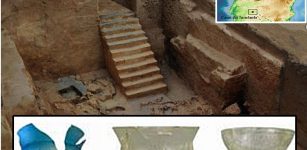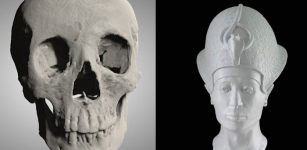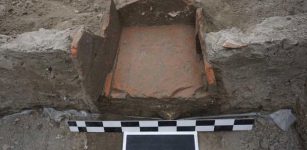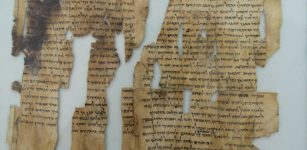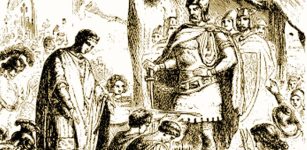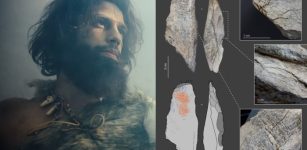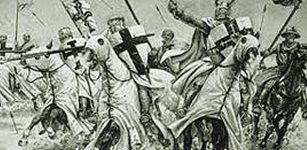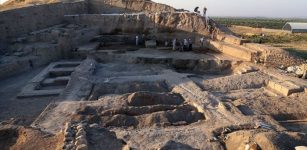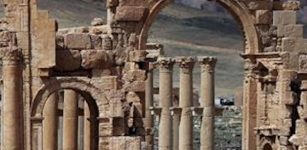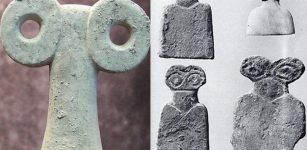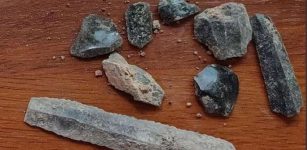Ritual Bath In Herod’s Fortress Found In Ruins Of Machaerus, East Of Jordan River
AncientPages.com - During excavations in the ruins of Machaerus, a citadel built by King Herod on the eastern shore of the Dead Sea, a team of Hungarian archaeologists has unearthed a large ritual bath most probably used the royal family.
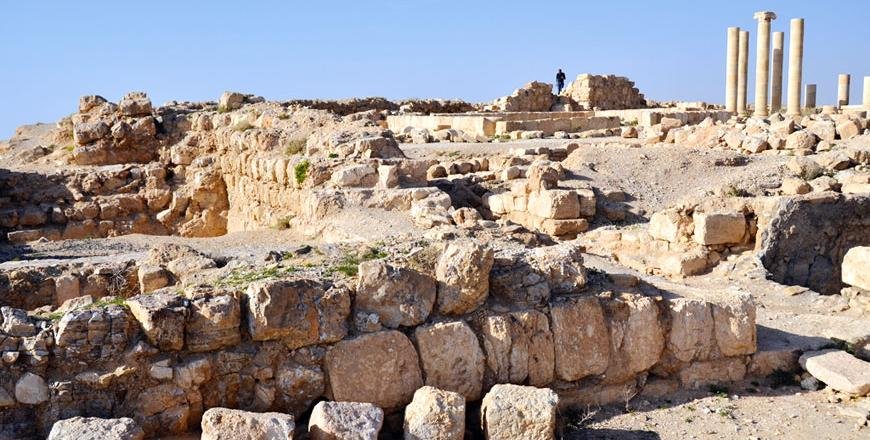
The 2,000-year-old Citadel of Machaerus was destroyed by Pompey’s general Gabinius in 57 BC, and later rebuilt by Herod in 30 BC as a military base
The bath has 12 steps, and was fed from a reserve pool when its water ran low. In order to qualify as a means to purification, a ritual bath must have at least 40 Se’ah, the equivalent of about 83 gallons of water. The underground cistern, 54 feet deep, watered the baths and the fortress’ gardens, reports Jewish Press.
Archaeologists say the bath is very similar to the baths and cisterns discovered in nearby Qumran (across the Dead Sea).
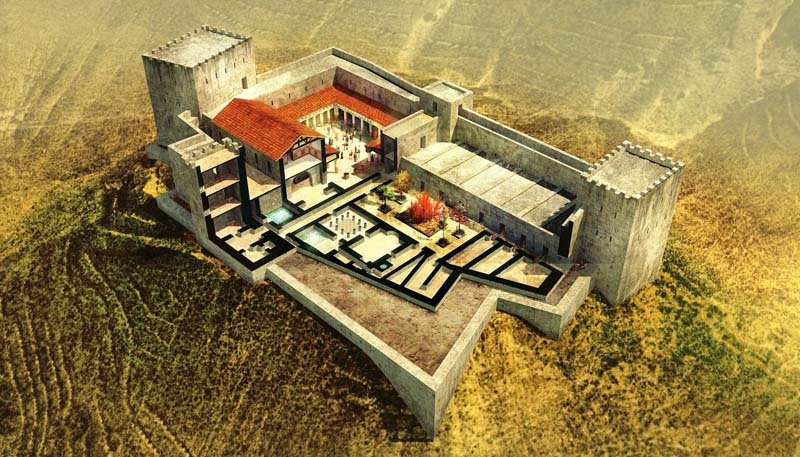
An artist’s view of Herod’s fortress Machaerus. / Photo credit: Courtesy of the Hungarian Archaeological Mission to Machaerus
It is situated 9 feet below the royal courtyard, and used to be covered by a vaulted stone roof, which was probably demolished by Lucilius Bassus’ 10th Roman legion. Bassus’ soldiers, on a campaign to repress the Great Jewish Revolt, in 71 attacked the Herodian fortress and the Jewish warriors who were hiding inside.
See also:
Mesha Stele: One Of The Most Valuable Biblical Artifacts
A Great Flood Destroyed The Mysterious Ancient City Of Petra – Evidence Has Been Found
Mystery Of The Lost Biblical City Of Ai – Where Was It Located?
Biblical Machaerus of great historical importance is located on a hill of about 800 meters above sea level and overlooking the Dead Sea, some 32km southwest of Madaba city. It was built by Hasmonean king Alexander Yanai (104-78 BC), probably in 90 BC.
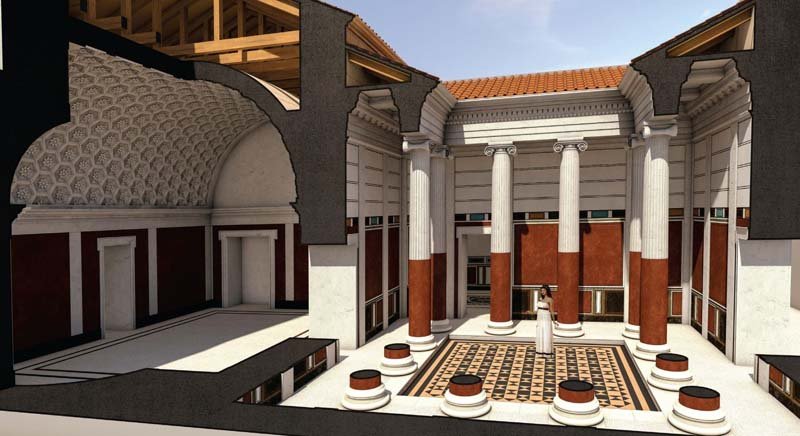
Simulation of the royal bathhouse in Machaerus, built by King Herod in Jordan. Courtesy of the Hungarian Archaeological Mission to Machaerus
The 2,000-year-old Citadel of Machaerus was destroyed by Pompey’s general Gabinius in 57 BC, and later rebuilt by Herod in 30 BC as a military base. Herod’s son, Herod Antipas, inherited the fortress (and the kingdom) in 4 BCE, until his demise in 39 CE. That’s time when, according to Christian belief, John the Baptist was imprisoned and beheaded at Machaerus.
Machaerus is not mentioned by name in the Bible, however, ancient tradition says that it was there that John the Baptist was imprisoned and executed.
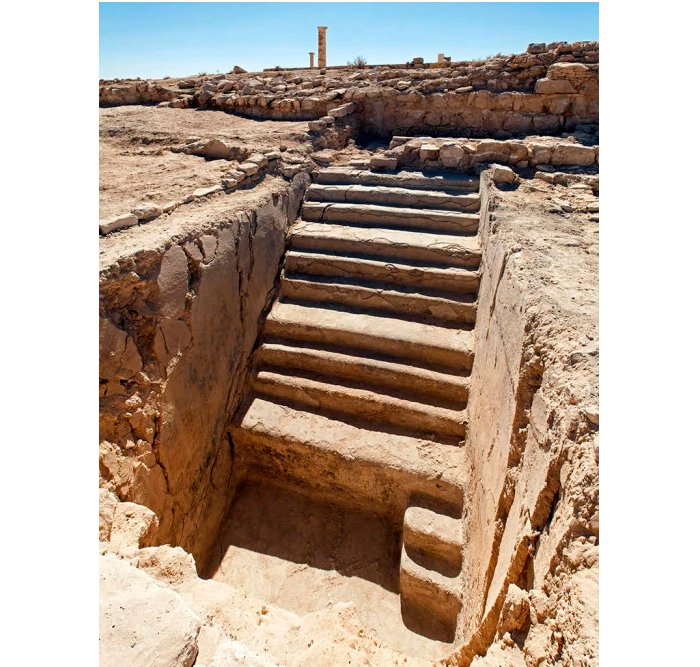
Large mikveh in Herod’s palace at Machaerus, Jordan. Photo courtesy of Hungarian Archaeological Mission to Machaerus. via Jewish Press
The legend sets the event on Herod’s birthday (that’s Herod II), when the king’s daughter Salome danced before the king and his guests, and her father liked it so much that he promised to give her anything she desired, at which point Salome asked for—and received—the head of John the Baptist on a platter.
The archaeological excavation of Machaerus started in 1968, by the American Archaeological Baptist Mission and recent digs by a Hungarian-Jordanian team led by Dr. Győző Vörös, also revealed two massive column drums, collapsed walls 30 feet high, four Roman ballistae and dozens of Hasmonean and Roman coins, as well as 47 Aramaic broken pottery shards inscribed with Aramaic letters.
AncientPages.com
Expand for references

